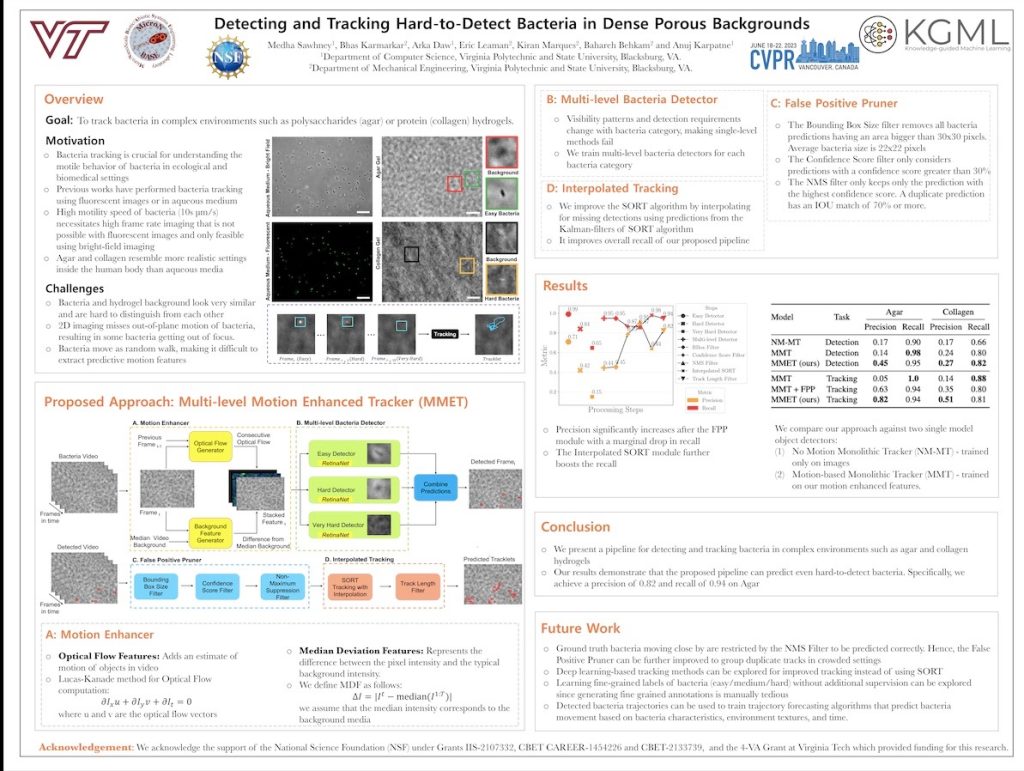Sanghani Center Student Spotlight: Medha Sawhney

Medha Sawhney earned a bachelor’s degree from the Manipal Institute of Technology in India, where she majored in electronics and communications engineering, with a minor in data science. When considering a graduate degree in computer science, Sawhney was drawn to Virginia Tech and the Sanghani Center by a research-focused environment that offered opportunities to learn from and work with professors well known in their respective fields of research which interconnected well with her own.
“A research-focused environment makes it easy to concentrate on your work by providing interesting and challenging research projects; professors who guide you in every way; and funding opportunities via grants from organizations like the National Science Foundation,” she said. “And most professors – even if they are not your direct advisor — are extremely approachable to guide you or discuss problems.”
Sawhney entered the university as a master’s degree student but is now pursuing a Ph.D. She is advised by Anuj Karpatne.
Having worked in the domain of computer vision since her undergraduate years, Sawhney’s current research is at the intersection of computer vision and mechanobiology.
Two projects — supported by the NSF — predict the behavior and mechanics of human as well as bacteria cells. One of them involves predicting the force exerted by cells in order to be able to predict their movement using traction-force microscopy images collected in the field of mechanobiology.
“The physics knowledge that we are integrating in our machine learning methods includes phenomenological models of cell and bacteria migration and knowledge of the mechanical forces governing interactions between cells and fiber backgrounds,” she said.
The second project involves tracking the movement of bacteria cells to predict and also study the characteristics of their motion such as their velocity, their stickiness, and other such measures. This study is directed towards cancer research.
“The resolution of microscopy and the dense fibrous environment the bacteria is in makes it challenging to differentiate the bacteria in an image by just looking at it since the bacteria sometimes merges with the 3D media or goes inside,” she said. “We use artificially-generated motion and temporal features of the microscopic bacteria images as input to the machine learning model to be able to identify and track them.”
Sawhney gave a poster presentation of her work, “Detecting and Tracking Hard-to-Detect Bacteria in Dense Porous Backgrounds,” at a CV4Animals: Computer Vision for Animal Behavior Tracking and Modeling workshop during the 2023 IEEE/CVF Conference on Computer Vision and Pattern Recognition (CPVR) last fall.
This was preliminary work for the paper, “MEMTrack: A deep learning-based approach to microrobot tracking in dense and low-contrast environments,” which will be published in an upcoming volume of the Advanced Intelligent Systems journal.
Sawhney will also be presenting her work on bacteria tracking at the first Workshop on Imageomics during the Association for the Advancement of Artificial Intelligence (AAAI 24) conference next week.
She is also serving on the program committee for the workshop.
Projected to graduate in 2026, her ideal job would be one that offers challenges and in which her work would have an impact on society.